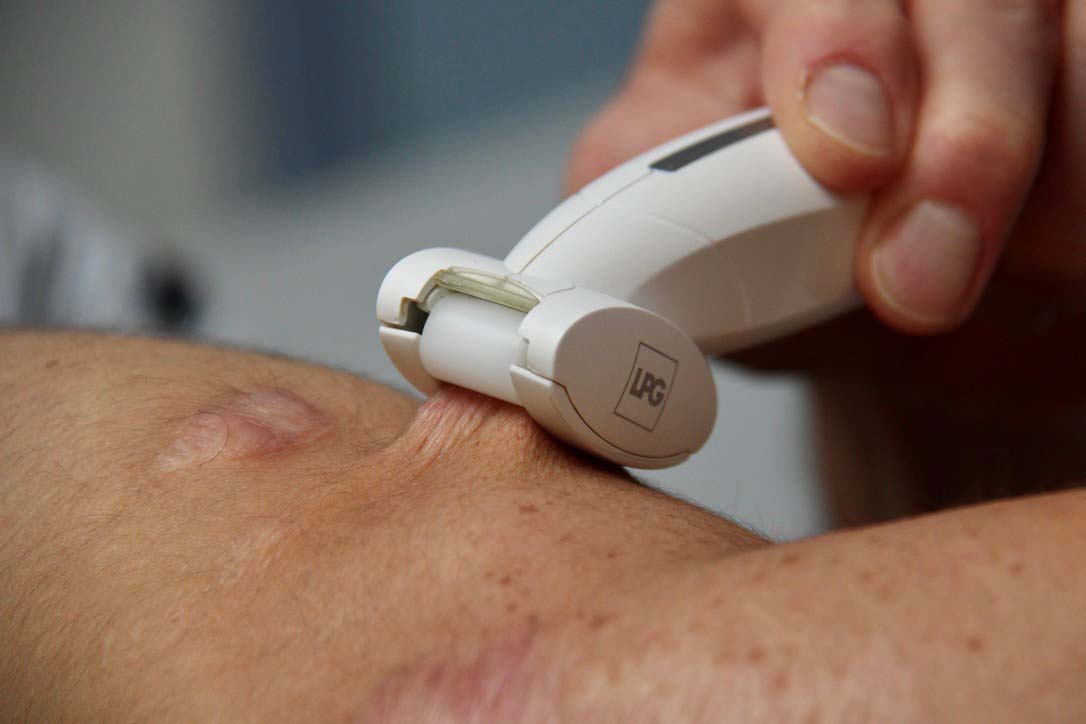Vacuum Massage
Why Vacuum Massage?
Vacuum massage is also known as depressomassage, vacuotherapy or Endermologie®. It is a non-invasive mechanical massage technique. It is performed with a mechanical device that lifts the skin by suction and creates a skin fold which can be mobilised. In the late 1970s, Louis-Paul Guitay developed the Endermologie® system (or LPG), this uses both suction (negative pressure) and mechanised rollers to mimic manual massage. LPG can provide consistent and effective treatment in a shorter time. Treatment sessions are painless and vary from 10 minutes to longer depending on the state and size of the scar.
Main improvements
Vacuum massage has shown beneficial results:
- Improved scar thickness
- Improved scar pliability
- Reduced scar redness (erythema)
- Reduced tethering and adherence of scars (stuck scars)
- Reduced pain
- Reduced oedema (swelling)
Adverse effects
- Slight sensation of pain in the area after treatment. This resolves itself after a short period of time.
- Mild swelling can be noticed in the area. This resolves itself after a short period of time.
- Slight sensation of tightness around the treated area can be experienced
Recommendations
Caution should be applied when treating scars within the first 3 months of wound healing and when scars are still in the inflammation stage. Make sure that the epidermis is not too fragile for treatment.
The effectiveness and safety of vacuum massage is highly dependent on the operator of the device, it should be provided in a clinic by a scar specialist. A series of treatments over several weeks is most effective.
F.A.Q.


